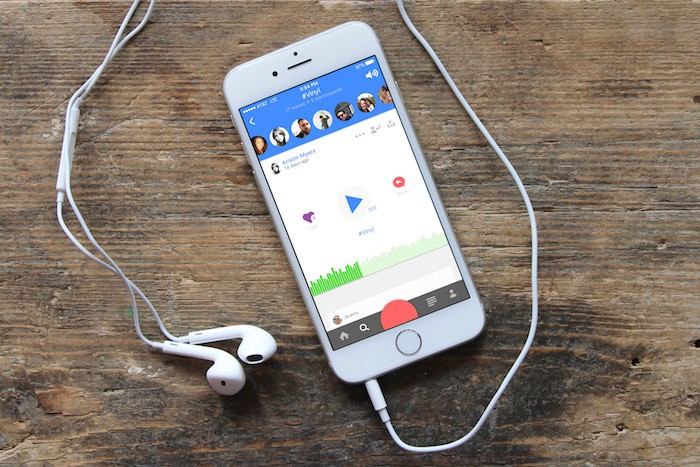
On Tuesday, WNYC reporter Arun Venugopal published a seven-minute story examining the role of political correctness in American society. After the story was posted, listeners debated PC culture in the comments section of WNYC’s website and on Facebook and Twitter.
 The reaction was what you’d expect for any story on a topic that evokes strong feelings. But WNYC began a conversation with listeners about political correctness two weeks ago, before the story was even broadcast.
The reaction was what you’d expect for any story on a topic that evokes strong feelings. But WNYC began a conversation with listeners about political correctness two weeks ago, before the story was even broadcast.
Venugopal took to Anchor, a new iOS app that lets users post short audio clips, to ask: “Do you think political correctness — what some people merely call being tolerate and civil — does it genuinely affect how people express themselves?”
Venugopal’s initial post has been played more than 2,000 times and elicited 26 responses from listeners who recorded their own posts answering his question and engaging with others in the thread.
Anchor launched publicly two weeks ago, but WNYC and Radiolab have been working with the startup for several months to test the product and offer feedback. The app has raised $1.6 million, and was incubated at Betaworks, the New York startup factory.
Audio has a reputation for being incompatible with social media. The conventional wisdom says that the Internet is an inherently visual medium, favoring text, video, and photos. Audio can also present logistical challenges for users (hence the popularity of silent videos on Facebook).“Social media has always been a challenge for radio because you have to just link back to your site,” said Delaney Simmons, WNYC’s social media director. “Now we have a place to go and share our voices and hear the voices of our fans, too.”
Anchor is designed to encourage discussion. So far, conversations on the app have covered everything from political correctness and the ongoing presidential election to which superpower you’d choose.
“I get self-conscious putting myself on video or taking a photo of myself, but I feel completely comfortable just speaking as if I’m on the telephone or at a party,” Anchor cofounder and CEO Michael Mignano said. “It opens up a lot of opportunities for people who want to be heard and want to express something, but haven’t necessarily felt comfortable doing so through other mediums.”
The Anchor app refers to individual posts as “waves.” I recorded one last week asking other users what they thought of the app so far.
The app is easy to use. To record, you hit the big red button that’s on every screen and hold the phone up to your ear. Once someone posts a wave, others are encouraged to reply to it. Anchor automatically plays the next reply in a discussion thread, so it feels as if you’re listening to an ongoing conversation.
The three replies I got to my wave all praised Anchor’s card-based design, which makes it easy to follow and share conversations.
One respondent hopes Anchor will do for audio what Instagram did for photos: make high-quality sound easy to capture and share.
Another respondent said he liked the app’s goals and user interface, but was concerned that the app was calling itself “the first true public radio” when it reserves the right to collect data about users and target ads at them. (Anchor has since changed its tagline to Radio by the People. In an email, Mignano said the “new tagline has greater clarity and alignment with our mission.”)
Mignano wouldn’t share how many users Anchor has so far; getting people to contribute and listen regularly is obviously core to their challenge.In his Hot Pod column last week, Nick Quah outlined some of the challenges Anchor faces as it tries to build its user base:
Being a social network, not only does the app now need to cultivate a critical mass of active users — either by direct customer acquisition or by seamlessly integrating with an existing social platform — it also needs to give users a good enough reason to stay. And because the Anchor experience is essentially premised on user-generated content (and content that’s recorded on the spot, at that), this means the app would require that its users to be, well, as interesting or useful as possible so that it can attract more users.
Anchor aims make it easy for users to discover quality content on the app. A “discover” page highlights trending topics and the best conversations. It also released a podcast featuring some of the best conversations on the app, including Q&As and other discussions moderated by Anchor staff.
For now, WNYC is the only news outlet on Anchor, and it plans to continue to experiment with the platform. Radiolab has used the app to offer listeners a sneak peek at early versions of stories, and sees it as a place for listeners to engage with the show and with each other. Radiolab probably won’t use recordings from Anchor on-air, but Simmons said other, more conversation-based WNYC programs, like The Brian Lehrer Show and The Takeaway, might eventually incorporate Anchor users’ comments into their show.
The station might also using the app as a way to solicit man-on-the-street interviews during breaking news events.
“If we can kickstart some of the conversations we’re having around the office and bring them to a larger audience, that’s one unmeasurable amount of success,” Simmons said. “We’re always looking at finding new audiences. This could be an opportunity for us to bring some of our shows to groups of people who haven’t discovered podcasting yet.”